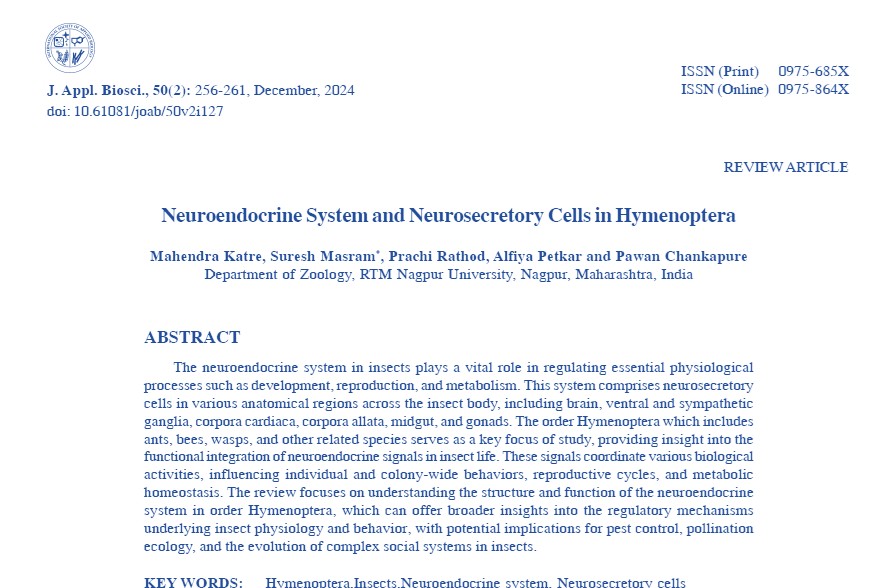Neuroendocrine System and Neurosecretory Cells in Hymenoptera
Main Article Content
Abstract
The neuroendocrine system in insects plays a vital role in regulating essential physiological processes such as development, reproduction, and metabolism. This system comprises neurosecretory cells in various anatomical regions across the insect body, including brain, ventral and sympathetic ganglia, corpora cardiaca, corpora allata, midgut, and gonads. The order Hymenoptera which includes ants, bees, wasps, and other related species serves as a key focus of study, providing insight into the functional integration of neuroendocrine signals in insect life. These signals coordinate various biological activities, influencing individual and colony-wide behaviors, reproductive cycles, and metabolic homeostasis. The review focuses on understanding the structure and function of the neuroendocrine system in order Hymenoptera, which can offer broader insights into the regulatory mechanisms underlying insect physiology and behavior, with potential implications for pest control, pollination ecology, and the evolution of complex social systems in insects.
Article Details

This work is licensed under a Creative Commons Attribution-NonCommercial-ShareAlike 4.0 International License.
